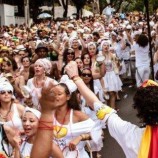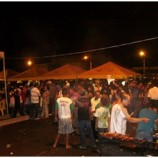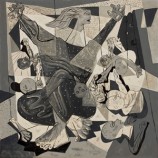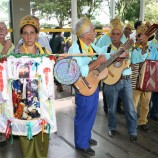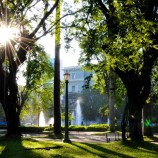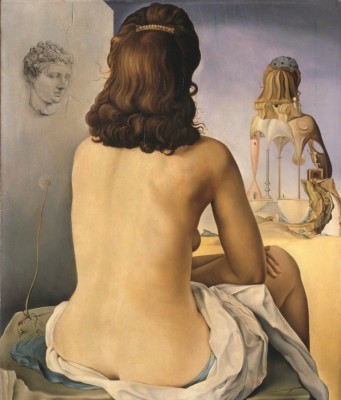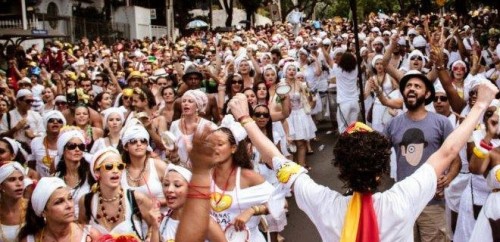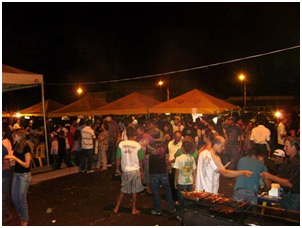The Festival of Saint John: Joy, Spontainety, and Creativity
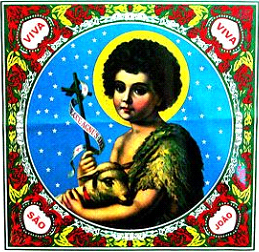

Today I will write about the Commemoration of Saint John, a tradition of my hometown Pompéu located in the central region of Minas Gerais, and the way I lived it over sixty-three years ago. A recollection of memories are brought back to me of this very party taken place in different times and places. The 24th of June of the Catholic calendar is dedicated to Saint John, considered to have been the most brilliant of the twelve apostles. In the small Brazilian towns the party is celebrated on the same day, but in the big city areas it is always celebrated on the nearest Saturday. In the Southern Hemisphere, the date coincides with the arrival of the winter solstice, which occurs two days before and holds the same significance as Christmas in the Northern Hemisphere. Being the coldest period of the year, the nights are longer and the days shorter. All cultures around the world have celebrations around this date, and in Brazil the party is traditionally held around a large bonfire.
During the month of June there are also celebrated the Holidays of Saint Anthony on the 13th, and of Saint Peter on the 29th, all of which is a pretext for the commemorations of the arrival of winter on the 21st. These celebrations are in conjunction called June Festival, “Festas Juninas”. The Country Wedding has become over time to be one of the principal events of Festas Juninas. The story is always the same; the pregnant Bride is obligated by her parents to marry the boyfriend who has “done her wrong”. The would-be husband turns out to have another girlfriend or already has children. All in all, he denies the marriage proposal, so the girl’s father, with the help of the town Sheriff, forcibly obliges him to enter the marriage. In the end it all works out, the wedding ceremony takes place and everyone comes in and dances “quadrilha”. Quadrilha dancing is nothing more than the commemorative dance of the wedding. In some occasions the characters exaggerate in an attempt to make themselves appear more humorous and sometimes add in a few jokes that can sometimes prove to be a bit too fiery for this type of celebration.
In the year of 1948, I lived at the end of a Street called “Os Cristos” a homage to a family with a very large number of members who had lived there. The next door down from my house lived a Miss Lia do Jiló. Lia was for many years separated from her husband nickednamed Jiló, a soft green vegetable with a very bitter taste, who on a very rare occasion stopped by. She was a much respected and admired woman as well as the mistress of the richest man in town, however the relationship bared very few fruits, if any.
On the front yard of her house she made the famous bonfire of Saint John. The guests arrived at night. In the hall, we prayed a solemn facing a painting made by her effective companion who was affectionately nicknamed “Bolo”, Cake. There were served in cups, mugs, bowls, plates and any old thing a “canjica de milho”, a corn porridge flavored with shredded coconut and cinnamon, a delicacy that I shall never forget.
On the eve of the party, Lia asked the neighbors for chairs, benches and borrowed all the containers she could for the big night. My brothers and I would go well dressed but barefoot, and we kept our mother’s recommendation to be careful not to step on the hot coals from the fire pit. On rare occasion, a kid would accidently burn his foot or hand. There was always the case of adolescents in an attempt to show off would jump over top of the blazing fire pit, sometimes getting too close to the flames and went home singed. After the canjica, a bottle of “pinga”, a hard alcohol made from sugarcane juice, was savored by the adults, with due discretion to the children and everyone rejoiced together. There then followed games, healthy laughter, and an all around joy, pure and natural between simple and humble folk. Then came the time for the implicit “invitation” to take leave: the raising of the flag pole which even today is a custom in the interior of Minas Gerais. They rise up a long stick of bamboo with a flag tied up on one end of Saint John holding a sheep in his arms. Applauses, hurrahs, and “Good Night!”.
In those days, I do not recall if near the Church Plaza, where the rich and better off people lived, there were any homes that celebrated this festival of the Saints with prayer, canjica, fire pits and flag raising. However, around the years of 1949 and 1950, a Madam Elza Alfonso Tavares arrived in town, a very young teacher who brought art into the schools with resonance from the entire community.
It was times of change for the town. The production of cotton disputed crop space with corn and beans; the marketplace was forming its first bulk traders who manipulated prices for the purchase of the coming crops; the harvest brought riches and joy to the farmers and to small family farmers generally on borrowed land in Exchange for half of the harvested crop. The people were well and merry with such prosperity; they were happy and hardly knew it. It is of no wonder that the writer Agripa de Vasconcelos affirmed that Pompéu had been the largest Center of agricultural production in Colonial Brazil.
With jingoism aside and coming back to where we were. Madam Elza brought her own way of education; she was an artist in the school. There was so much joy in her “gymnastics” class. We learned to breath in a simulation of blowing out candles, we learned that special “touch” with songs that still ring in our ears: the “Skaters Waltz” of Émile Waldteufel, brought tears to our eyes when sung shortly after the passing of Madam Madalena, Elza’s mother… Only now that I am an old man that I realize the playful and artistic value of Dona Elza’s classes which took place right after recess at the School Group Jacinto Campos. I still feel implicit longings for those games and playtimes. Such longings I have!
It was Dona Elza who started rehearsing for the June Festival and the children’s quadrilhas. She may not remember just how much she counted on the help of the beautiful Eduarda, newcomer to Pompeu, who helped with decorations and confections for the girls’ hair curls. The teens helped decorate the school with bamboo poles brought in by the school boys, I myself took some bamboo from my yard and brought it to Dona Elza with leaves and everything, strutting with pride. A party! We clipped crepe paper and made the flags to decorate our “fair”. To be taken from the school to the community was a natural leap. Dona Elza invited accordionists and first there was Nazareno. Man oh man, that boy sure could play! She also taught the girls to make the rotating, ruffled calico dresses, to dress the boys with beards and coal mustaches. The girls abused the rouge, the only makeup around in those times, straw hats were rounded up and then the adorning ribbons. “Festa do arraiá”, meaning “Village Fest” as we called it highlighting our rustic, country swagger.
The ‘quadrilha’ for the adults began. What a load of laughs and teases: the funniest situations arose and even the mishaps became the laughing stock. Then came the golden moment that led the whole gang to rejoice, smile and watch attentively: after the couple was pronounced married, begins the dance marked in French with a hillbilly accent: “Come on in! Pay attention … En avant, tour, en arriere, swing, travesser gentlemen, travesser ladies, travesser geral, autre fois, dance commands.” After a few years, this great party rooted itself in our city’s tradition, and out of nowhere was forever in our midst.
These days, in Belo Horizonte, capital city of Minas Gerais state, this festival is more artificially produced, the public office promotes contests with prizes at the end, but people’s participation is almost mechanical.
I lived for some years in Salvador, capital of Bahia state. The capital city is called “Bahia” by all the interior of Bahia. In Bahia as well as throughout the Northeast of Brazil, Festas Juninas are the most important occasions. They excel in some aspects to Christmas, New Years, Easter, Mother’s Day, Children’s Day and Father’s Day. This year of 2011, the organizers said they would ignite a thousand tons of fireworks. What a great investment!
One of the more effusive compliments that I received there, which also was a big surprise to Binha, my young wife at the time, was the “Happy Saint John” card she received, accompanied by a little gift that was brought personally by a young and well educated engineer, Robert Benjamin who probably still lives somewhere in the world. The card Happy St. John accompanied me and my ex-wife for the rest of our marriage.
On the streets of most neighborhoods, the fires burned throughout the week. Commercial establishments from small grocery stores to the emerging supermarkets sold ready-made fires that facilitated the festivities.
There, like in most of the Northeast, there are sweets made from fresh corn pulp, it is delicious! It’s called Canjica. For us here in the southeast, it’s called Fresh Corn Porridge. It is the busiest confection of all St. John celebrations. It is as common there as it is to us here in the Southeast, only they call it “mungunzá.” Here we add plenty of roasted and ground peanuts, less not forget a little grated coconut, and for the sake of chewing lazily, boiled whole corn kernels, and lastly a touch of Clove.
What actually stayed in my memories and accompanied by some surviving photographs, was a certain party in the Federal Capital, Brasilia, held on a little farm, where in 1972 I took a course related to Project Rondon, which had the objective to take students into the field for aid work, initially with indigenous peoples, and later with other communities that were isolated in the countryside. There was a bit of everything happening at that time and people from all over the country were there. I played the part of a priest, as they said, and it was said on that occasion that I surpassed all others before me. I ended up “drowning a few” before the party and saying, in a playful kind of way mind you, some truths and a whole lot of nonsense which I never would have said if I were sober.
The June festivals, although they are celebrated in the four corners of Brazil, in the Northeast have significant expression. The city of Campina Grande, Paraíba state, boasts of having “the Greatest Festival of St. John in the World.” In Brasilia, the party is “for the English to see”, an expression that means it’s a pure political spin. Hype aside, it was worth seeing the president Dilma, as was Lula, his predecessor, indulge his ministers on the festival of St. John in Granja do Torto, home field of the presidency.
In my beloved Uruguay, where I had a work corner, we Brazilians tried to reproduce the party. But the glow there is for another folkloric festival, created with some other steps similar to ours and perhaps with the participation of younger people.
In conclusion, the festival of St. John, despite the diversity of styles in the various regions of Brazil, all share the same joy, spontaneity and creativity, bringing in people from various social backgrounds and different political or religious beliefs always leaves an impression on all of the very best recollections.
Join us:
http://www.youtube.com/watch?v=jqYWQxm8sDk
Related Articles



